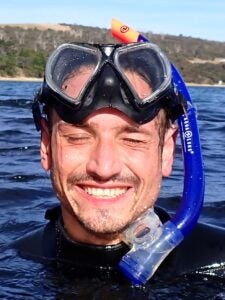
Anna Weiss
USC MEBP Ph.D. Candidate
Co-Advisors: Dr. Cameron Thrash & Dr. Naomi Levine
Isolation of Novel Heterotrophs from the Globally Important Microbial Community,
Trichodesmium Microbiome
Tuesday, February 27, 2024, 11:30 AM
AHF 153 (Torrey Webb Room)
Abstract: Microbial communities in the ocean are important drivers of the global carbon and nitrogen cycles. However in order to decipher the complex relationships within these communities, the members must first be brought into culture. In this work we strove to isolate heterotrophic community members of the Trichodesmium microbiome, a global contributor to carbon and nitrogen cycles. Trichodesmium is a diazotrophic cyanobacterium which fixes up to 50% of new nitrogen in oligotrophic regions of the ocean where it lives. Its conserved microbiome has been shown to play a role in modulating its nitrogen fixation and there is some evidence of cooperative interaction between Trichodesmium and its heterotropic community members. We undertook a series of isolation experiments utilizing both solid plates and dilution to extinction (DTE) inoculated with colonies obtained from 6 cruises over two years. In order to predict metabolic requirements for the heterotrophs of interest, a medium supplement was designed using over 10,000 predicted media recipes generated using genome scale metabolic models (GEMs) developed from 18 metagenome assembled genomes of community members. Artificial seawater medium with and without the supplemental compounds was used in the isolation experiments. We cultivated 259 isolates representing 25 genera of Alphaproteobacteria, Gammaproteobacteria, Bacteroidia, and Bacilli. We observed differences in community composition between samples isolated using supplemented and unsupplemented media. Isolates were also compared to metagenomes collected on the cruises where the initial inoculum was obtained and it was found that 10 of 178 heterotrophic OTUs were matches to isolates at >97%, including the 4th, 5th and 13th most abundant OTUs in the field data. Cultivation of these heterotrophic members of the Trichodesmium microbiome will enable future co-culture experiments aimed at untangling the relationships within the community.

Dr. Hagen Buck-Wiese
USC MEB Post-Doctoral Scholar – Research Associate
From in situ to in silico – understanding carbon cycling through algal sugars
Abstract: Algae perform 40% of global photosynthesis and convert the fixed carbon foremost into carbohydrate polymers. My work aims to understand the fate of these carbohydrates, and whether some escape microbial degradation to sequester carbon. Compositional and structural differences between carbohydrates require case by case assessments: The more complex a carbohydrate, the greater the degradative effort for bacteria. I hope to give an illustrative and entertaining report on field campaigns and laboratory experiments aiming at marine carbohydrate identification and quantification. These provide the background of my work at USC to transition from observing and describing to mechanistically understanding marine carbohydrate cycling.